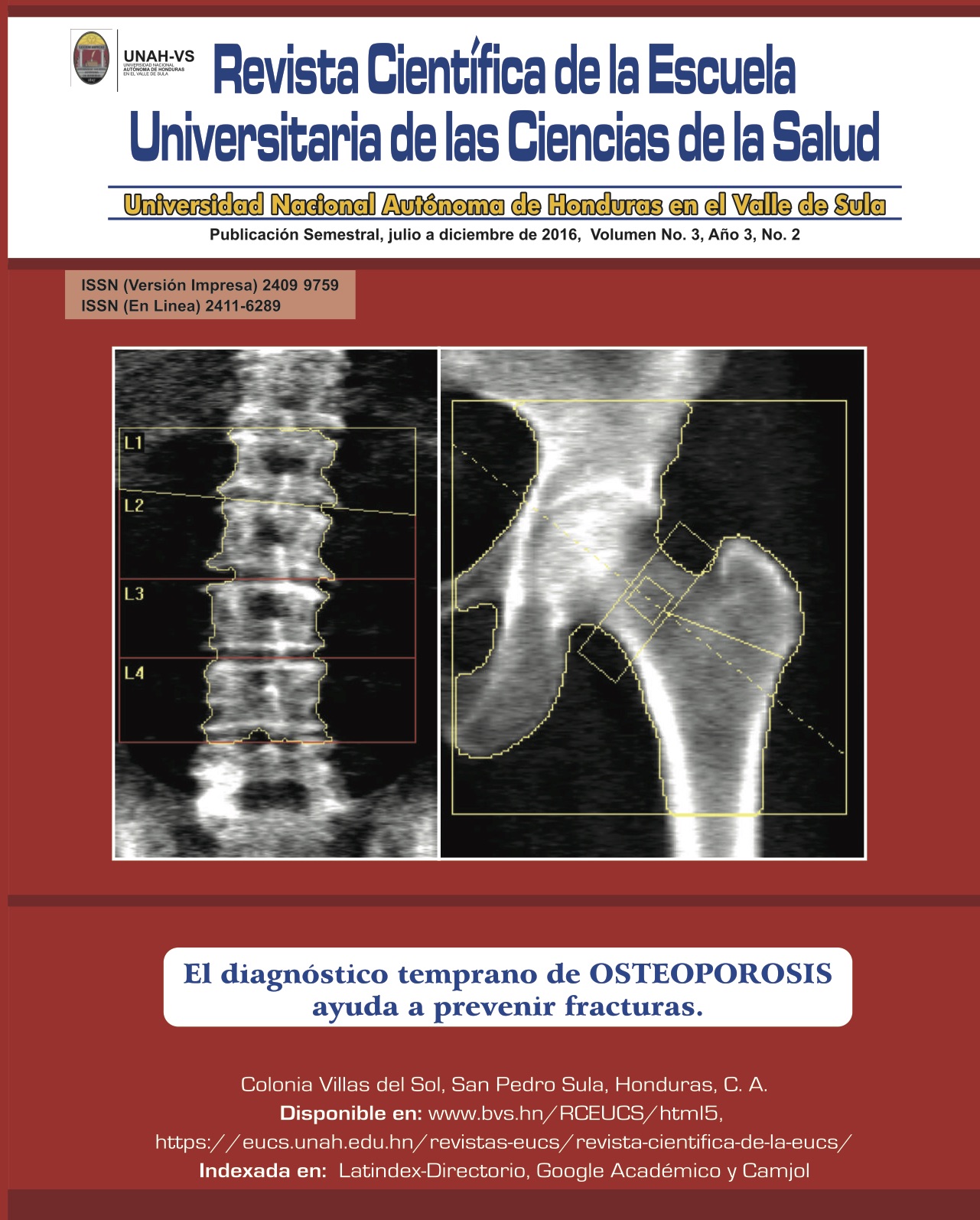Portal hypertension in patients with background of onfaloclisis
DOI:
https://doi.org/10.5377/rceucs.v3i2.7051Abstract
Portal hypertension is a pathology whose most dramatic clinical manifestation is digestive hemorrhage due to varicose veins. It is an emergency that is difficult to manage, with a mortality that can reach 25% depending on the context. Portal hypertension is called elevation of portal pressure above 10 mm Hg caused by increased resistance and flow of portals. The present the case is a 9 year-old male patient, who came to the emergency of "Private Hospital" with a history of hematemesis on two occasions, of moderate amount, after which he underwent a high digestive endoscopy that reported grade IV esophageal varices without bleeding but With signs of poor prognosis and gastric ulcer Forrest II C without recent bleeding data. In abdominal ultrasound Doppler hepatic venous dilatations with hepatic flow record were observed. The Magnetic Resonance Angiography (MRA) showed changes in signal intensity in relation to changes by portal cavernous transformation and evidence of splenomegaly. Diagnosing it as Portal hypertension, during the hospital stay, during the interrogation, the mother reported having undergone umbilical catheterization in the neonatal period. It is recommended that every patient undergoing umbilical venous catheterization underwent a thoracoabdominal radiograph to observe the correct placement of the umbilical catheter and thus prevent future complications.
Keywords
Hypertension Portal, Porta System, Splenomegaly, Fibrosis, Esophageal varices
Downloads
1704




